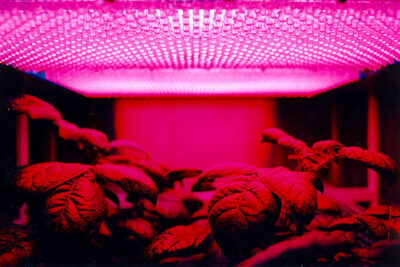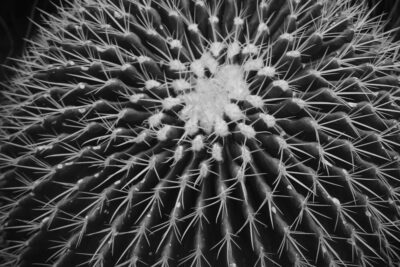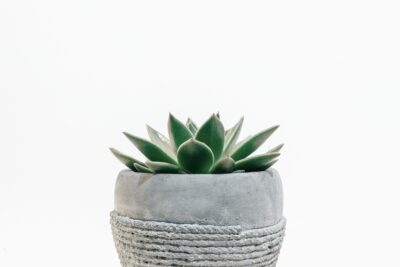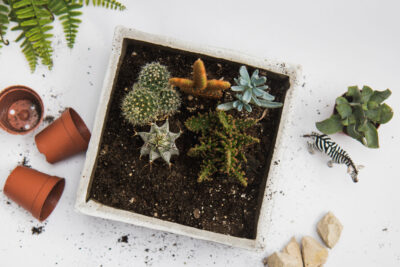
The Ideal Amount of Sunlight for Succulent Growth: A Guide

Succulents are a popular choice for indoor and outdoor gardening due to their unique and beautiful appearance, as well as their ability to thrive in various environmental conditions. One crucial factor that significantly impacts the growth and health of succulent plants is the amount of sunlight they receive. Understanding the ideal amount of sunlight for succulent growth is essential for ensuring their long-term survival and vibrant appearance.
We will explore the optimal amount of sunlight that succulents need to thrive. We will discuss the different sunlight requirements for various types of succulents, including those that prefer direct sunlight and those that thrive in partial shade. Additionally, we will provide practical tips on how to protect succulents from excessive sunlight and how to adjust their light exposure based on seasonal changes. By the end of this guide, you will have a comprehensive understanding of how to provide your succulents with the ideal amount of sunlight for their growth and overall well-being.
- The ideal amount of sunlight for succulent growth depends on the type of succulent
- Most succulents prefer bright, indirect sunlight
- Some succulents can tolerate full sun, while others prefer partial shade
- It is important to gradually acclimate succulents to increased sunlight to prevent sunburn
- If a succulent is receiving too much sunlight, its leaves may turn brown or yellow
- If a succulent is not receiving enough sunlight, it may become elongated and pale in color
- A good rule of thumb is to provide succulents with 4-6 hours of sunlight per day
- South-facing windows are ideal for indoor succulents, as they receive the most sunlight
- Outdoor succulents should be placed in a location that receives morning or late afternoon sun
- It is important to monitor the sunlight conditions and adjust accordingly to ensure the best growth for succulents
- Frequently Asked Questions
The ideal amount of sunlight for succulent growth depends on the type of succulent
When it comes to growing succulents, one of the most important factors to consider is the amount of sunlight they receive. While succulents are known for their ability to thrive in arid conditions, it's crucial to provide them with the right amount of sunlight to ensure their growth and overall health.
It's important to note that different types of succulents have varying light requirements. Some succulents prefer bright, direct sunlight, while others thrive in partial shade. Understanding the sunlight needs of your succulents is key to creating an ideal environment for their growth.
Full Sun Succulents
Succulents that fall under the category of "full sun" require at least 6 hours of direct sunlight per day. These sun-loving succulents, such as Echeveria, Sedum, and Sempervivum, have adapted to thrive in hot and dry conditions. Placing them in an area with ample sunlight will promote healthy growth and vibrant colors.
However, it's important to be cautious not to expose them to scorching midday sun, especially during the summer months. Providing some shade during the hottest part of the day can help prevent sunburn and heat stress.
 Sunlight Needs of Succulent Plants: Finding the Perfect Balance
Sunlight Needs of Succulent Plants: Finding the Perfect BalancePartial Sun Succulents
On the other hand, succulents that prefer partial sun or partial shade can tolerate a few hours of direct sunlight but benefit from some protection during the hottest parts of the day. These succulents, including Haworthia, Gasteria, and some varieties of Aloe, are native to shadier environments and can become sunburned if exposed to intense sunlight for extended periods.
Placing them in an area with filtered or indirect sunlight, such as near a sheer curtain or under the canopy of a tree, will provide the perfect balance of light and shade for their growth.
Indoor Succulents
If you're growing succulents indoors, it's essential to mimic their natural light conditions as closely as possible. While they may not receive the same intensity of sunlight as outdoor succulents, they still require bright light to thrive. Placing them near a south-facing window or using artificial grow lights can help provide the necessary light for their growth.
Remember that even indoor succulents can still get sunburned if exposed to intense, direct sunlight for too long. Monitoring their light exposure and adjusting their placement accordingly is crucial for their well-being.
The ideal amount of sunlight for succulent growth varies depending on the specific type of succulent. Understanding their light requirements and providing the appropriate amount of sunlight, whether full sun, partial sun, or indoors, is crucial for their overall health and thriving growth.
Most succulents prefer bright, indirect sunlight
When it comes to growing healthy and vibrant succulents, providing them with the right amount of sunlight is crucial. While these plants are known for their ability to thrive in various environmental conditions, they have specific preferences when it comes to sunlight exposure. Most succulents prefer bright, indirect sunlight, which mimics the conditions they would naturally encounter in their native habitats.
 Can Peat Moss Be Beneficial as a Soil Amendment for Succulents?
Can Peat Moss Be Beneficial as a Soil Amendment for Succulents?Direct sunlight can be too intense for succulents, especially during the hottest hours of the day. This can lead to sunburn, leaf damage, and even death in extreme cases. On the other hand, insufficient sunlight can result in weak, etiolated growth, where the plants stretch and become leggy in search of more light.
Understanding bright, indirect sunlight
Bright, indirect sunlight refers to the type of light that is diffused and not directly hitting the succulent's leaves for an extended period. This can be achieved by placing the plants near a window with a sheer curtain or in a spot where they receive filtered light through a shade cloth or tree canopy.
Succulents thrive in bright conditions, but they prefer when the intensity of the sunlight is moderated. This allows them to receive enough light for photosynthesis while avoiding the risk of sun damage. It's important to note that different succulent species may have varying tolerance levels to direct sunlight, so it's essential to research the specific needs of your plants.
Signs of inadequate sunlight
It's crucial to pay attention to your succulents' behavior and appearance to determine whether they are receiving adequate sunlight. Some common signs of inadequate sunlight include:
- Stretching or elongation of stems
- Pale or yellowing leaves
- Decreased growth or stunted appearance
- Leaning or bending towards the light source
If you notice any of these signs, it's a good indication that your succulents need more light. Adjust their placement accordingly to provide them with the ideal amount of sunlight.
Factors to consider
While bright, indirect sunlight is generally ideal for most succulents, there are a few factors to consider to ensure their optimal growth:
- Location: Consider the location of your succulents indoors or outdoors. Indoor succulents may require additional light sources, such as grow lights, to supplement natural sunlight. Outdoor succulents may need protection from intense afternoon sunlight or frost during winter.
- Seasonal changes: The amount of sunlight available can vary throughout the year. Adjust the positioning of your succulents accordingly to ensure they receive adequate light during different seasons.
- Individual plant needs: Different succulent species have varying light requirements. Some may tolerate more direct sunlight, while others prefer shadier conditions. Research the specific needs of your succulents to provide them with the optimal environment.
By understanding and providing the ideal amount of bright, indirect sunlight, you can ensure that your succulents thrive and display their distinctive beauty. Remember to monitor their behavior and adjust their sunlight exposure as needed to keep them healthy and flourishing.
 Can Succulents Thrive Outdoors in Any Climate and Season?
Can Succulents Thrive Outdoors in Any Climate and Season?Some succulents can tolerate full sun, while others prefer partial shade
When it comes to growing succulents, understanding their sunlight requirements is crucial for their overall health and growth. While succulents are known for their ability to thrive in arid conditions, not all of them have the same tolerance for sunlight. Some succulents prefer basking in the full sun, while others prefer a bit of shade to prevent sunburn.
It is important to note that each succulent species has its own unique preferences, so it's essential to do some research on the specific succulent you are growing. However, as a general rule, succulents can be categorized into two groups based on their sunlight requirements: those that can tolerate full sun and those that prefer partial shade.
Succulents that can tolerate full sun
If you have a sunny spot in your garden or want to keep your succulents near a window that receives direct sunlight, these succulents will be your best bet:
- Agave: Agave plants are known for their ability to tolerate intense sunlight. They have thick, fleshy leaves that help them store water, making them perfect for hot and sunny climates.
- Aloe Vera: Aloe Vera plants love basking in the sun. They require at least six hours of direct sunlight each day to maintain their vibrant green hue and promote healthy growth.
- Echeveria: Echeverias are popular succulents that can tolerate full sun. They have stunning rosette-shaped leaves and can develop vibrant colors when exposed to ample sunlight.
Succulents that prefer partial shade
If you have limited access to direct sunlight or want to grow succulents indoors, these succulents will thrive in partial shade:
 Unraveling the Secrets of Succulents: Thriving in Diverse Environments
Unraveling the Secrets of Succulents: Thriving in Diverse Environments- Haworthia: Haworthias are small, compact succulents that prefer bright but indirect light. They can tolerate lower light conditions, making them ideal for indoor spaces.
- Sansevieria: Also known as the Snake Plant or Mother-in-Law's Tongue, Sansevieria is a popular indoor succulent that can tolerate low light. It can be placed in areas with indirect sunlight or even artificial light sources.
- Crassula ovata: Commonly known as the Jade Plant, Crassula ovata prefers bright, indirect light. It can tolerate lower light conditions, making it a suitable choice for indoor gardening.
Remember, even succulents that prefer full sun can still get sunburned if they are suddenly exposed to intense sunlight after being kept in the shade for an extended period. It's always a good idea to gradually acclimate your succulents to direct sunlight to prevent any damage.
By understanding the sunlight preferences of your succulents, you can provide them with the ideal growing conditions and enjoy their beautiful, vibrant foliage for years to come.
It is important to gradually acclimate succulents to increased sunlight to prevent sunburn
When it comes to succulent care, one crucial factor to consider is the amount of sunlight they receive. While succulents are known for their ability to thrive in bright and sunny conditions, it is essential to gradually acclimate them to increased sunlight to prevent sunburn.
Why is acclimating succulents to sunlight important?
Succulents, with their thick leaves and stems, have adaptations that allow them to store water and withstand dry conditions. However, sudden exposure to intense sunlight can cause sunburn, leading to unsightly discoloration, brown patches, or even permanent damage to the plant. Acclimating succulents to sunlight helps them develop a protective layer of pigments, such as anthocyanins, and build up their tolerance to prolonged exposure.
How to acclimate succulents to increased sunlight:
 The Ultimate Guide: Maximum Size of Indoor and Outdoor Succulents
The Ultimate Guide: Maximum Size of Indoor and Outdoor Succulents1. Start by placing your succulent in an area with partially filtered sunlight, like under a sheer curtain or in the shade of a larger plant. Gradually increase the exposure time over a period of 1-2 weeks.
2. Monitor your succulent for signs of stress or sunburn. If you notice any discoloration or wilting, move the plant back to a shadier spot and reduce the exposure time.
3. Slowly transition your succulent to direct sunlight by gradually increasing the time it spends in the sun. Start with 15-30 minutes of direct sunlight in the morning or late afternoon, gradually extending the duration each day.
4. Avoid exposing your succulent to intense midday sunlight, especially during the hot summer months. This can be too harsh for their delicate leaves and stems.
5. Consider using shade cloth or a sheer fabric to provide extra protection from intense sunlight, especially if you live in a region with scorching summers.
Signs of a well-acclimated succulent:
A succulent that has been successfully acclimated to sunlight will display vibrant colors, plump leaves, and overall healthy growth. It will be able to tolerate longer periods of direct sunlight without suffering from sunburn or stress.
 Are my succulents stretching under my grow light? How to prevent it
Are my succulents stretching under my grow light? How to prevent itConclusion
Properly acclimating succulents to increased sunlight is crucial for their overall health and appearance. By gradually exposing them to more sunlight and monitoring their response, you can ensure that your succulents thrive and avoid the damaging effects of sunburn. Remember to take it slow and be patient – your succulents will thank you with their beautiful and resilient growth.
If a succulent is receiving too much sunlight, its leaves may turn brown or yellow
When it comes to succulent care, getting the right amount of sunlight is crucial. While these plants are known for their ability to thrive in sunny conditions, excessive sunlight can actually harm them. If you notice that your succulent's leaves are turning brown or yellow, it may be a sign that it is getting too much sunlight.
Succulents have evolved to survive in arid environments with plenty of sunlight, but they still need some shade to protect them from intense rays. The ideal amount of sunlight for succulent growth varies depending on the specific species and their natural habitat. However, a general rule of thumb is to provide them with about 6-8 hours of bright, indirect sunlight per day.
It's important to note that succulents can adapt to different light conditions, but sudden changes in light exposure can cause stress to the plant. If your succulent has been growing in low light conditions, gradually increase its exposure to sunlight over a period of a few weeks to avoid shock.
When positioning your succulent, it's best to place it near a window or in an area that receives bright, filtered light throughout the day. Avoid placing them in direct sunlight for extended periods, especially during the hot afternoon hours when the sun's rays are the strongest.
If you live in an area with intense sunlight or a climate that experiences scorching summers, providing some shade during the hottest part of the day can help protect your succulents from sunburn. This can be achieved by placing a sheer curtain or shade cloth over the window or using a nearby object to create some shade.
 How Resilient Are Succulents to Temperature Fluctuations?
How Resilient Are Succulents to Temperature Fluctuations?Here are a few signs that your succulent may be receiving too much sunlight:
- Leaves turning brown or yellow
- Leaves becoming bleached or white
- Leaves becoming thin and transparent
- Leaves developing sunburn spots
If you notice any of these signs, it's important to adjust the amount of sunlight your succulent is receiving. Move it to a location with less direct sunlight or provide some shade during the hottest part of the day. Remember that finding the right balance of sunlight is crucial for the healthy growth and vibrant colors of your succulents.
If a succulent is not receiving enough sunlight, it may become elongated and pale in color
When it comes to succulent care, providing the right amount of sunlight is crucial for their growth and overall health. Succulents, known for their ability to store water in their leaves and stems, thrive in bright, indirect sunlight.
However, it is important to find the right balance, as too much or too little sunlight can have negative effects on these plants. If a succulent is not receiving enough sunlight, it may become elongated and pale in color.
So, what is the ideal amount of sunlight for succulent growth?
The ideal amount of sunlight for succulent growth varies depending on the specific type of succulent you have. Generally, succulents prefer 6 to 8 hours of bright, indirect sunlight per day. This can be achieved by placing them near a south-facing window or providing them with filtered light if direct sunlight is too intense.
 The Science Behind Succulents Turning Red in Specific Conditions
The Science Behind Succulents Turning Red in Specific ConditionsHere are some key factors to consider:
- Type of succulent: Different succulent varieties have different sunlight requirements. Some succulents, like Echeverias and Sedums, prefer full sun and can tolerate more intense sunlight, while others, like Haworthias and Sansevierias, thrive in partial shade.
- Seasonal changes: Sunlight intensity can vary throughout the year, so it's important to adjust your succulent's exposure accordingly. During the winter months, when the sun is less intense, succulents may require more direct sunlight. In contrast, during the hot summer months, providing some shade or dappled sunlight can prevent sunburn.
- Indoor vs. outdoor succulents: Indoor succulents may require more attention to ensure they receive adequate sunlight. If you are growing succulents indoors, it's essential to place them near a window that receives bright, indirect sunlight or use artificial grow lights to supplement their light needs.
Signs of inadequate sunlight:
- Pale or bleached appearance
- Elongated stems or leaves
- Weak and leggy growth
- Flattened or stretched-out shape
- Reduced vibrancy in color
If you notice any of these signs, it's a clear indication that your succulent is not receiving enough sunlight and adjustments should be made.
Remember: Each succulent is unique, and it's important to observe and understand the specific sunlight requirements of your plants. By providing them with the ideal amount of sunlight, you can ensure their growth and vibrant appearance.
A good rule of thumb is to provide succulents with 4-6 hours of sunlight per day
When it comes to the ideal amount of sunlight for succulent growth, a general rule of thumb is to provide them with 4-6 hours of direct sunlight per day. Succulents are known for their ability to thrive in sunny and arid conditions, making sunlight an essential factor in their growth and overall health.
Direct sunlight is crucial for succulents as it allows them to undergo photosynthesis, the process by which they convert sunlight into energy. This energy is then used for various metabolic processes, including growth and development. Without adequate sunlight, succulents may become weak, etiolated, and have poor growth.
However, it is important to note that not all succulents have the same sunlight requirements. Some succulents, such as echeverias and sedums, can tolerate more intense sunlight and may even benefit from additional hours of direct sunlight. On the other hand, certain succulent varieties, like haworthias and gasterias, prefer indirect or filtered sunlight due to their natural habitat in shady areas.
 Factors Affecting Succulent Size: Growth Potential & Limitations
Factors Affecting Succulent Size: Growth Potential & LimitationsFactors to Consider for Sunlight Exposure
When determining the ideal amount of sunlight for your succulents, there are several factors to consider:
- Succulent Variety: Each succulent species has its own unique sunlight requirements. Research the specific variety of succulent you have to ensure you provide it with the appropriate amount of sunlight.
- Climate: The climate in which you live plays a significant role in determining the amount of sunlight your succulents receive. In areas with intense heat and strong sunlight, it may be necessary to provide some shade during the hottest parts of the day to prevent scorching.
- Season: Sunlight intensity and duration vary throughout the year. During the summer months, when the sun is at its peak, succulents may benefit from longer exposure to direct sunlight. In contrast, during winter, when the sun is weaker, it may be necessary to provide additional protection or move succulents indoors.
- Placement: The location where you place your succulents can affect their sunlight exposure. Placing them near windows or in areas with unobstructed access to sunlight can ensure they receive the necessary hours of direct sunlight each day.
- Monitoring: Keep a close eye on your succulents and observe their response to sunlight. If you notice signs of sunburn, such as browning or yellowing leaves, it may be an indication that they are receiving too much direct sunlight. On the other hand, if they appear stretched or pale, it may be a sign that they are not receiving enough sunlight.
Remember, finding the ideal amount of sunlight for your succulents may require some trial and error. It is essential to monitor their response and make adjustments accordingly to ensure optimal growth and overall health.
South-facing windows are ideal for indoor succulents, as they receive the most sunlight
When it comes to growing succulents indoors, providing them with the right amount of sunlight is crucial for their health and growth. While succulents are known for their ability to thrive in harsh conditions, they still require a certain amount of sunlight to flourish. One of the best locations for your indoor succulents is near a south-facing window, as it allows them to receive the maximum amount of sunlight throughout the day.
Why are south-facing windows ideal for succulents? The answer lies in the path of the sun. In the Northern Hemisphere, the sun primarily moves from east to west, with the highest concentration of sunlight coming from the south. Placing your succulents near a south-facing window ensures that they receive consistent and direct sunlight for the majority of the day.
However, it's important to note that the intensity of sunlight can vary depending on factors such as the time of year, geographical location, and surrounding buildings or trees that may cast shadows. Therefore, finding the perfect balance of sunlight is essential to prevent your succulents from getting sunburned or becoming etiolated.
How much sunlight do succulents need?
The ideal amount of sunlight for succulents varies depending on the specific species and their natural habitat. As a general rule of thumb, most succulents require at least six hours of direct sunlight each day. This can be achieved by placing them near a south-facing window that receives ample sunlight.
 Succulents: Full Sun or Shade for Optimal Growth?
Succulents: Full Sun or Shade for Optimal Growth?However, it's important to monitor your succulents' response to sunlight and make adjustments accordingly. If you notice signs of sunburn, such as brown or yellow patches on the leaves, it's an indication that they are receiving too much direct sunlight. On the other hand, if your succulents start stretching or leaning towards the light source, it's a sign that they are not getting enough sunlight.
Providing the right conditions for indoor succulents
In addition to sunlight, succulents also require the right watering and soil conditions to thrive indoors. It's crucial to use well-draining soil specifically formulated for succulents to prevent root rot. Watering should be done sparingly, allowing the soil to dry out completely between waterings. Overwatering is one of the most common mistakes that succulent enthusiasts make, as it can lead to root rot and ultimately the death of the plant.
Furthermore, providing adequate airflow and avoiding drafts is essential for the well-being of your indoor succulents. Succulents are native to arid regions and are not accustomed to high humidity or drastic temperature fluctuations. Therefore, it's best to keep them away from windows that are frequently opened or exposed to cold drafts.
- Place your succulents near a south-facing window to maximize sunlight exposure.
- Monitor your succulents for signs of sunburn or stretching and adjust their placement accordingly.
- Use well-draining soil and water sparingly to prevent root rot.
- Avoid exposing your succulents to drafts or extreme temperature changes.
By following these guidelines, you can create the ideal conditions for your indoor succulents to thrive and enjoy their unique beauty all year round.
Outdoor succulents should be placed in a location that receives morning or late afternoon sun
Succulents are known for their ability to thrive in sunny and dry conditions, making them a popular choice for outdoor gardens. However, it's important to provide them with the right amount of sunlight to ensure optimal growth.
When it comes to sunlight, outdoor succulents should be placed in a location that receives morning or late afternoon sun. These periods of the day provide a good balance of light and warmth without being too intense.
It's important to avoid exposing succulents to direct sunlight during the hottest parts of the day, especially during the peak summer months. This can cause the leaves to burn or scorch, leading to irreversible damage.
To protect your succulents from intense sunlight, consider placing them in areas where they can receive filtered light. This can be achieved by positioning them under a tree canopy, near a tall building, or using shade cloth to diffuse the sunlight.
Signs of inadequate sunlight:
- Leggy growth: If your succulent starts stretching or growing tall and thin, it is a sign that it is not receiving enough sunlight. Inadequate sunlight causes the plant to elongate in search of more light.
- Faded or dull colors: Succulents that are not getting enough sunlight may appear pale or have a dull color. Lack of sunlight can affect the pigmentation of the leaves, resulting in a less vibrant appearance.
- Stunted growth: Insufficient sunlight can hinder the growth of succulents, causing them to remain small or not grow at all. If your succulent seems to be stagnant in its growth, it may be a sign that it needs more sunlight.
Signs of excessive sunlight:
- Sunburned leaves: Succulents that are exposed to excessive sunlight may develop sunburned leaves, which appear as brown or yellow patches on the leaves. This occurs when the plant is unable to handle the intensity of the sunlight.
- Leaf bleaching: Too much direct sunlight can bleach the leaves of succulents, causing them to lose their natural color and become white or translucent.
- Leaf wilting or shriveling: Excessive sunlight can cause the leaves of succulents to wilt or shrivel up. This is a sign of dehydration and can be detrimental to the plant's health.
Remember, finding the ideal amount of sunlight for your succulents may require some trial and error. Observe how your plants respond to the current amount of sunlight they receive and make adjustments accordingly. With the right balance of sunlight, your succulents will flourish and thrive in their outdoor environment.
It is important to monitor the sunlight conditions and adjust accordingly to ensure the best growth for succulents
Succulents are known for their ability to thrive in various conditions, including limited sunlight. However, it is crucial to strike the right balance when it comes to providing sunlight for these plants. Too much or too little sunlight can have adverse effects on their growth and overall health.
So, what is the ideal amount of sunlight for succulent growth?
Generally, succulents require at least 4-6 hours of direct sunlight each day to thrive. This means placing them in a location where they can receive a good amount of sunlight, such as near a south-facing window or outside in a spot that gets ample sunlight.
However, it is essential to note that different succulent species have varying sunlight requirements. Some succulents, like Echeverias and Sedums, can tolerate more sunlight and may even benefit from full sun exposure for a few hours each day. On the other hand, certain succulents, such as Haworthias and Gasterias, prefer indirect or filtered sunlight.
Here are some tips to help you determine the ideal amount of sunlight for your succulents:
- Observe the leaves: If your succulent's leaves start to turn yellow or brown, it may be receiving too much sunlight. Conversely, if the leaves appear stretched or elongated, it could be a sign of insufficient sunlight.
- Experiment with placement: If you notice your succulent is not thriving in its current location, try moving it to a different spot with varying sunlight conditions. Observe how it responds to the change and adjust accordingly.
- Use shading techniques: If your succulents are exposed to intense sunlight for extended periods, you can provide them with some shade using sheer curtains, blinds, or a shade cloth. This will help protect them from scorching and ensure they receive the right amount of light.
Remember, consistency is key when it comes to sunlight exposure for succulents. While they can adapt to different conditions, sudden changes in sunlight levels can cause stress and damage to the plants. It is best to gradually adjust their exposure if needed, allowing them time to acclimate to the new conditions.
By providing the ideal amount of sunlight, you can ensure that your succulents grow healthy, vibrant, and resilient. So, keep an eye on the sunlight conditions and make adjustments as necessary to create the perfect environment for your succulent garden.
Frequently Asked Questions
1. How much sunlight do succulents need?
Succulents generally need 6-8 hours of direct sunlight per day.
2. Can succulents survive in low light conditions?
Succulents can survive in low light conditions, but they may become stretched or leggy as they try to reach for more light.
3. Is it possible to give succulents too much sunlight?
Yes, succulents can get sunburned if exposed to intense, direct sunlight for too long. It's important to gradually introduce them to full sun and provide some shade during the hottest hours of the day.
4. What are the signs of too little or too much sunlight for succulents?
If a succulent is not getting enough sunlight, it may become pale, elongated, or lose its vibrant colors. On the other hand, if it is getting too much sunlight, it may develop brown or yellow spots, or its leaves may become wrinkled and shriveled.
If you want to read more articles similar to The Ideal Amount of Sunlight for Succulent Growth: A Guide, you can visit the Growing Conditions category.






You Must Read